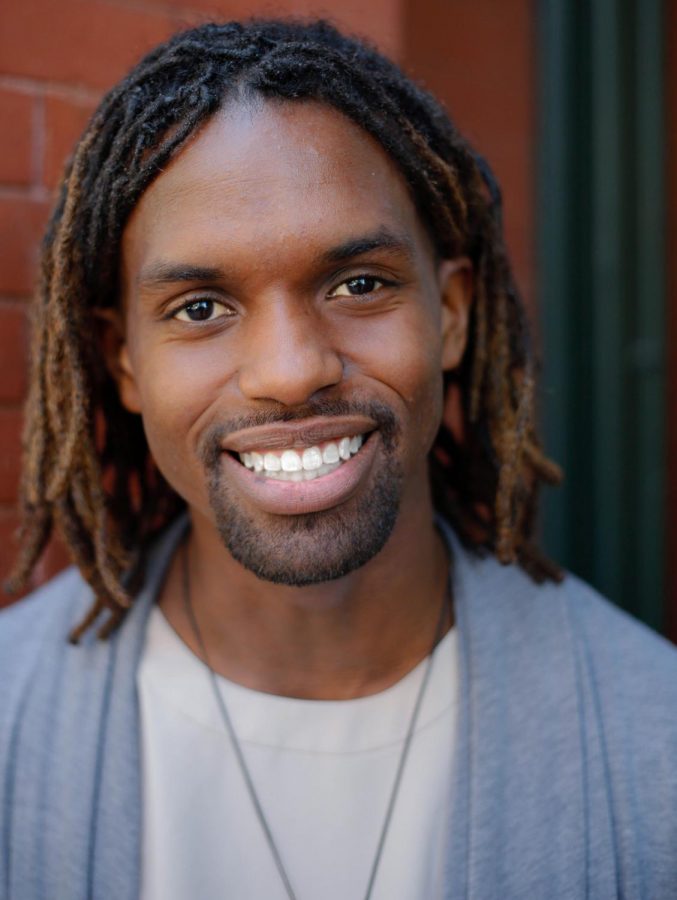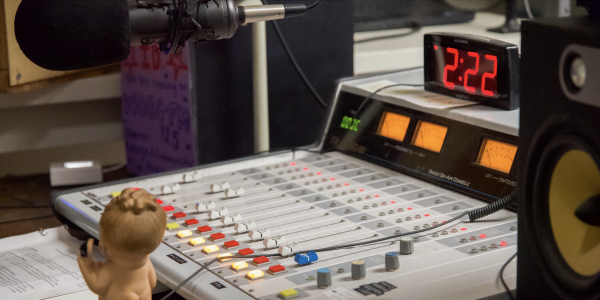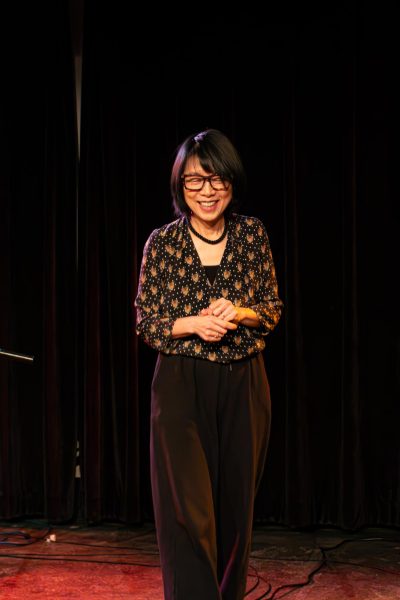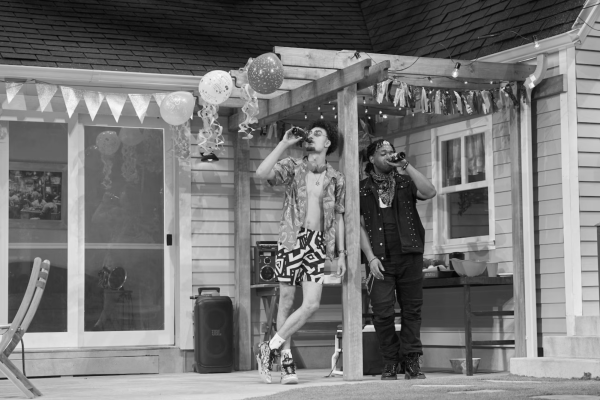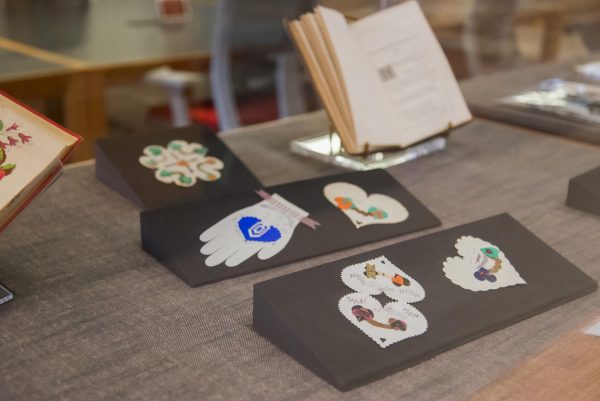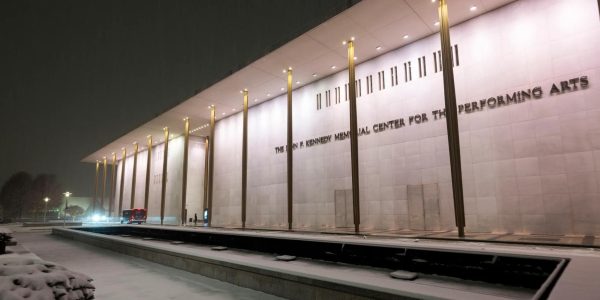B.J. Tindal, OC ’16, Playwright
B.J. Tindal
B.J. Tindal, OC ’16, wrote the upcoming theater mainstage production, What We Look Like. At Oberlin, Tindal majored in Theater and Africana Studies before earning his MFA at Northwestern University’s Writing for the Screen and Stage program. Tindal won the 2019 Alliance/Kendeda National Graduate Playwriting Competition with his Oberlin senior capstone project, Goodnight, Tyler, which will go up at the Alliance Theatre in Atlanta this month. What We Look Like is the first play that Tindal wrote at Oberlin. It runs from Thursday, Feb. 7 through this Sunday, Feb. 10 at the new Irene and Alan Wurtzel Theater. Tickets are $8.
This interview has been edited for length and clarity.
So what is What We Look Like about?
The play is about the Hodges family, a Black family, that just moved to the suburbs. They’re a family of five: you’ve got a mom, a dad, the oldest son, the second oldest daughter, and the baby boy who’s eight years old. It’s revealed in the first scene — the mom and dad are in a counseling office — that the youngest son has an imaginary white family, which in a lot of ways ends up being the mom’s worst nightmare. They’ve moved from a neighborhood that was predominantly Black into a suburb which is predominantely white, and now her son essentially doesn’t want to be Black. A lot of the play is about what family is “supposed” to look like, and who that idea benefits and who that idea disadvantages. The American dream of the house with the lawn and the white picket fence is damaging for some families. The play kind of shows how that idea works negatively against the Hodges. You go on a ride with this family that is trying to make things work.
Why did you write this play?
I started writing it in [Professor Caroline Jackson-Smith’s] African American Drama class in the spring of 2013. We were reading a lot of plays about Black families from the 20th century. At that time there was, what felt like, a drought of Black people in the media in meaningful ways. Black-ish had not premiered yet — that wasn’t a thing until a year and a half later. So I was really interested in writing a piece that talked about a Black family in the 21st century. The play was [originally] only one scene — it was that first scene. We had talked about Brown v. Board of Education and the doll test that they did in response to that case in that class. I chose for my final to write about that and make a scene that dramatized it and put it on its feet.
How has the script changed since you first wrote it?
A big way that it’s changed after I worked on it in Ms. Caroline’s class is that Tommy, the youngest son, was originally a character in the play. That was the direction that I was going to go. And then basically there was a scene where I was like, “Well what if I just took him out of the scene and saw what it was like if just the older brother and the sister talked?” Just as an experiment. And I liked it so much better. Everyone’s responses to what it means when an eight-year-old black boy comes home with a picture of a white family, and all the politics around that and who it affects in the household — I ended up finding more dramatically interesting.
Aside from that, the group that worked on it in 2014 and 2015 really, really helped shape what it is. Maansi Sahay Seth co-directed it with me that year and also was the dramaturg for the show. We came to rehearsal and we both knew we were going to work from what was on the page but we were also going to add to it. There was a lot of ad-libbing. There were a lot of lines added that were messed up by accident that are now permanently in the show. I think a big part of the show is that it’s been shaped by a community of people. That community includes the cast and the crew. The stage manager Amethyst Carey, the costume designer Calypso Moon, and the lighting designer Dominique Pearson all added to the show and affected the narrative in a way that I was super proud to put in the script permanently. It’s been on a journey, and I hope it continues to go on a journey.
What is it like coming back to Oberlin?
I definitely didn’t expect to be back so soon. A lot of the people who I was here with are gone now, so it’s really interesting going to a campus where I feel very much like an outsider — but not in a negative [way] at all. A lot of the folks who were [first-years] when I was a senior are now seniors, so it’s really cool to see all of them kind of running campus and doing what they do. A lot of the culture on campus seems very similar to what it was when I was there. But, you know, there are problems that we had to deal with that I’m happy that people now don’t have to deal with. I guess working with this play particularly, and knowing what the culture of campus was like when we did it the first time versus what it is now, it felt like a good way to get an idea of what campus life is now. I feel like I learned a lot while working with the cast that’s putting it up now, just because we spent several days talking about how Oberlin might respond to this play, and when the last time was that Oberlin had a play that talked about some of the politics that are in What We Look Like.
What do you hope that the audience walks away with?
A couple of things. One — when it comes to Oberlin’s campus, a lot of what this version of this play is about is Black people moving into situations where they’re around predominantly white people and it’s not the norm for them. Allegedly 7 percent of Oberlin is Black. When I was here a lot of us came from schooling where we had been used to being around all white people already. But there are a lot of Black people at Oberlin where this is the first time where that’s true, and I feel like that gets overlooked sometimes. And so a lot of what this play is talking about is what the disadvantages and consequences of that experience are. So for Oberlin specifically, for the white audience members, I hope it can be, “How are we carrying the culture of this campus so that it makes room for the students of color here?” Oberlin’s position as a high-end institution, as a super-progressive academic and highly performing place, is a utopia for a lot of folks and it’s also really not a utopia for a lot of the students of color. I hope that this play can be a wake-up call or a reorienting around how you think about race culture on campus.
I also hope that folks can walk away thinking about who their family is and thinking about what their relationship is to their family. And when I say family, I mean birth family and chosen family. Who do you stand by no matter what? Because you get to choose. I think you get to see that a few characters make that choice actively in this play. I hope when folks walk away they think, “Who are the people in my life that I choose, and why do I choose them?” Other than that, I hope you liked it. I hope you had fun.
Is there anything else you would like to add?
This play in a lot of ways is about family and community, and I really want people to know that a community built it. I want to highlight Maansi’s work particularly. There’s a lot of work when it comes to playmaking that goes unseen and that we don’t talk about and that we don’t value because people don’t know that it’s been done. Dramaturgy work gets missed a lot. I want folks to know how hard and integral that work is to what this show has been since its inception. The show is about community and community is what made this show possible.


